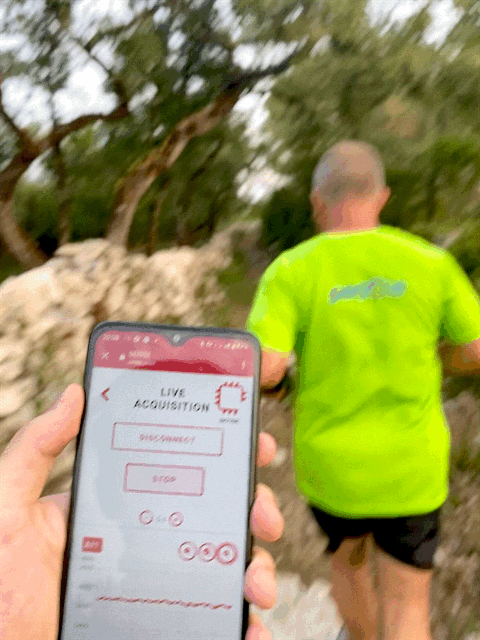Run Like a ScientISST
From the PreEpiSeizures project, necessity has arrised to denoise multiple biosignals acquired during daily life tasks. Running and walking are some of our daily activities that, due to movement and sweat, most contaminate biosignals with noise. Volunteers are needed to run for 30 minutes while wearing multiple acquisition devices.
Motivation
The PreEpiSeizures project has been working on the detection and prediciton of epileptic seizures with a chest-band. Their chest band acquires Electrocardiogram (ECG), Respiration (RESP), and Accelerometry (ACC). Despite the large dataset the group has gathered from patients with Epilepsy, those biosignals have been always acquired under very controlled enviornments, namely the neurology internment wings. So, what about when we transition to outpatient environments? Will the current processing and analysis algorithms still work? The short answer is: "most likely not". The complex answer should be investigated by ScientISST João Saraiva in his Master's thesis.
Prototyping
A complex setup was built to acquire biosignals from healthy subjects while they perform daily life tasks. Two ScientISST SENSEs were used to acquire multitude of biosignal modalities:
1 ECG with gel electrodes at chest
1 ECG with dry electrodes (PreEpiSeizures band)
1 RESP mechanical band (PreEpiSeizures band)
3-axis ACC on the chest
1 Electromyogram (EMG) around the left bicep
1 Electrodermal Activity (EDA) with gel electrodes at wrist
1 Photoplethysmogram (PPG) at index finger
Moreover, the setup includes one Empatica E4 wristband that acquires:
1 EDA with dry electrodes
1 PPG
3-axis ACC
1 Temperature infrared sensor
The goal is to have two channels of every modality: one with less signal quailty (dry electrodes), one with more signal quality while moving (gel electrodes). The later channels should serve as targets to evaluate the performance of denoising algorithms. The denoising algorithms we are currently developing go from very simple thresholds, to machine learning and autoencoder models.
While running, participants should wear all these devices, for at least 30 minutes. The acquisition of the ScientISST SENSE channels is assured by the corresponding Mobile App, which will be turned on thoughout the run on a smartphone being carried by the chaperon.
Participate in This Study
Now that good weather has arrived for good to Lisbon, the group will start running with healthy volunteers around the city, while they wear multiple acquisition devices that should acquire multiple biosignal modalities (ECG, EDA, EMG, PPG, RESP, ACC, Temperature). The wearable devices include one PreEpiSeizures chest band, one Empatica E4 wristband, and two ScientISST SENSEs on the chest and upper arm.
If you enjoy running and are eager to contribute to scientific advances, you can anonimously volunteer to participate by emailing [email protected]. At the end, we will also provide you a clear picture of your run from a prespective you've never seen before!
Project Gallery

ScientISST
Technologies Used








